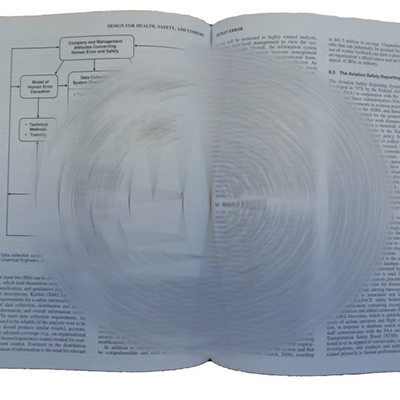Learning to read and write again after stroke

After experiencing a stroke on the left side of the brain, many people will acquire aphasia. Aphasia is a language disorder that affects a person’s ability to talk, understand others, read, and write. It does not, however, affect a person’s intelligence. There are approximately 2 million Americans currently living with aphasia in the United States.
Most treatments for aphasia are focused on helping people improve their spoken language abilities, with less emphasis on therapy that addresses reading and spelling difficulties. However, written language skills are necessary to participate in many common activities of daily living, such as reading a menu or texting a friend or family member. Importantly, people with aphasia often express interest in working on these skills to regain more independence and improve overall communication and social interaction with others.
Our laboratory, the FSU Aphasia Research Laboratory, is evaluating the effects of a 9-week comprehensive reading and spelling treatment for aphasia. Our treatment protocol builds off previous work that shows it is beneficial to simultaneously target reading and spelling skills, and furthermore, that it is advantageous to spend time re-training the phonological, or sound, system, to help individuals re-learn how to connect the sounds in English to their corresponding letters. Being able to derive sound from letters and then attach meaning to those sounds are critical skills needed for reading and writing.
Reading and spelling treatment was delivered to two individuals with aphasia two to three times a week, and each participant received 36 hours of therapy over nine weeks. In addition, reading and spelling homework exercises were assigned to increase the intensity of treatment outside of the therapy room.
Treatment consisted of three progressive stages. Stage 1 focused on re-training the connections between sounds and letters, which are often interrupted after a stroke in the left hemisphere of the brain. Each consonant and vowel sound in the English language was practiced in a multi-modal fashion, meaning that participants worked on listening to the sound being produced by the speech therapist, seeing the sound by looking at pictures of the correct mouth posture, watching the therapist’s mouth and their own mouth in a mirror, feeling each sound by identifying which parts of their mouth were moving to produce the sound, saying the sound by repeating the therapist’s production, reading each sound by identifying the corresponding letter, and writing each sound by copying the corresponding letter.
Stage 2 of therapy targeted reading and spelling of single words. Participants listened, repeated, read, and wrote targeted words. This stage focused on improving phonological awareness by having participants identify the individual sounds that made up each word. Participants completed exercises that involved breaking the word down into individual sounds and then blending those sounds back together, as well as substituting or adding sounds/letters to the targeted words to create new words that shared overlapping sounds/letters. The purpose of this stage was to further strengthen knowledge of how letters and sounds are related.
Stage 3 focused on comprehending trained words and emphasized the connection between letters and their meaning, or semantics, which is necessary to understand the word being read or spelled. To achieve this, participants completed a variety of tasks that involved identifying the definition of the word, as well as related words, and deciding which written sentence used the target word correctly. Finally, participants wrote or copied a sentence using the word correctly. Tasks from Stages 1 and 2 were used to help complete the comprehension exercises in Stage 3.
We are now analyzing the data for this project, but so far, the results look promising. Both participants improved in their ability to read and spell the trained words, and importantly also showed improvement on words that were not trained. This lets us know that the skills learned in therapy generalized or carried-over to words that were not practiced in therapy and indicate that reading and spelling in everyday life situations might also improve. Finally, improvement on spoken language tasks, such as the ability to repeat words and name pictures, also improved after therapy, which is another example of generalization and show cases the close relationship between spoken and written language.
These preliminary results are a testament to neuroplasticity, the brain’s ability to rewire itself and make new neural connections after brain injury. Both participants endured their strokes over 10 years ago and our findings, along with those of many others, demonstrate that language recovery does not have a time limit, as once thought. People with aphasia can continue to make improvements many years after the initial brain injury.
Our reading and spelling treatment protocol will continue to be modified and validated with additional participants to determine its efficacy and efficiency. Future work will also focus on hearing from people with aphasia tell their story of how their stroke impacted their reading and writing and get input directly from stroke survivors on how best to rehabilitate written language.
We hope our work encourages professionals working with individuals with aphasia to spend more time on the assessment and treatment of reading and writing skills, which are critical for social interaction and quality of life, and are of high importance to people living with acquired reading and writing difficulties.














